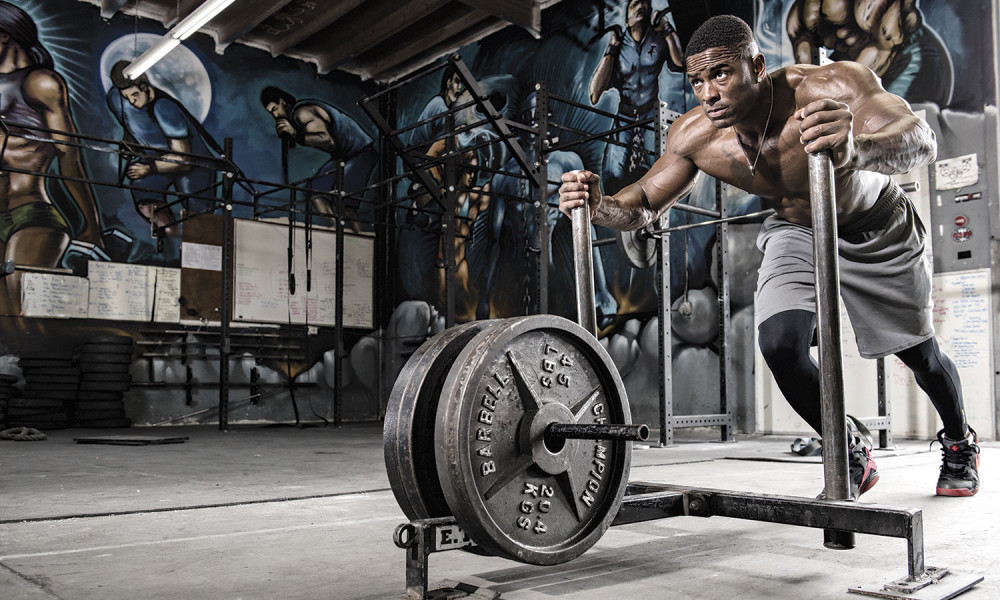

When Javon Walker retired from the NFL in 2010 after an eight-year career highlighted by a Pro Bowl appearance in 2004, he still had the itch. Not an itch to keep going over the middle and taking hits from the league’s most imposing linebackers, but rather an itch to keep competing—and more importantly, to keep training hard.
Five years later, the former Green Bay Packer star wide receiver is on another professional stage: the Men’s Physique division of the IFBB. Having earned his pro card at the 2015 NPC Universe Championships with an overall title and making his pro debut at the Tampa Pro this past August, Walker may be a long way from Lambeau Field, but he’s decidedly more shredded than he was while catching passes from Brett Favre. And as owner of Formulation 1 Nutrition, a Houston-based supplement company, Walker is entrenched in the fitness industry and has no plans of leaving it anytime soon.
Iron Man recently caught up with one of the IFBB’s most gifted and well-rounded athletes to discuss the life-changing transition from NFL receiver to Physique competitor.
Iron Man: What was the transition like from NFL player to competitive Physique athlete?
Javon Walker: Being an athlete my whole life and working out for a particular reason, and that reason being sports, made the transition pretty easy. One thing about retiring is that you still have a competitive edge, so you want to work out and compete at something. Through social media I discovered all these athletes with awesome bodies, and I was wondering what it is that they do. I’ve always been one who loves to take care of my body, so I dug a little deeper and discovered that they were all Physique competitors. And I decided I wanted to give it a try.
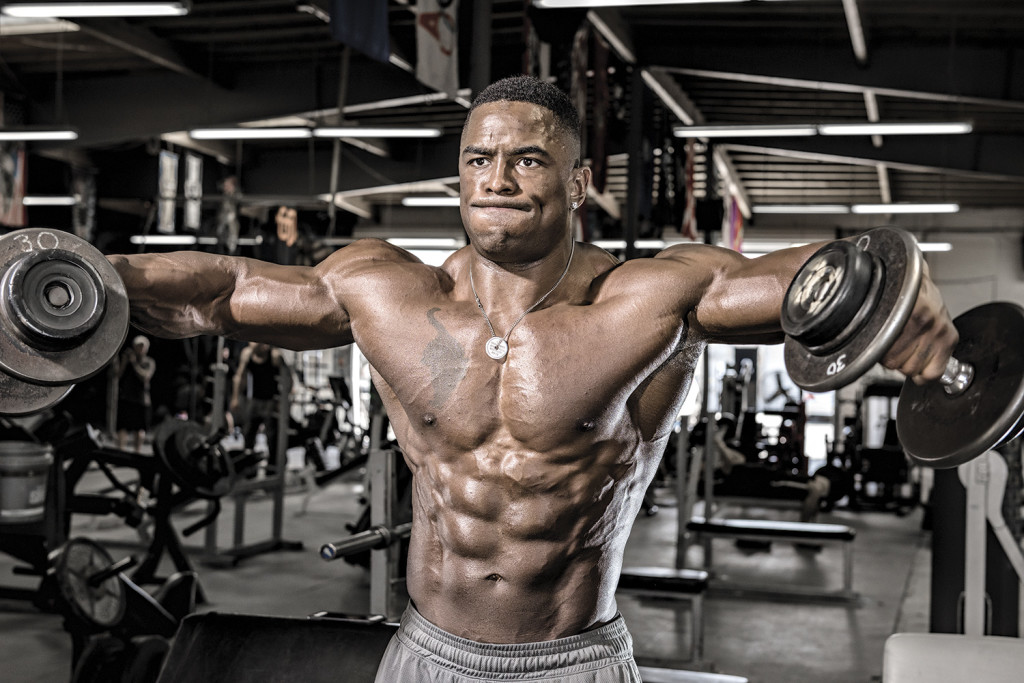
IM: How long was the process between you deciding you wanted to try competing in Physique and actually stepping onstage?
JW: I started training in 2013 and spent about a year and a half transforming my body to where it would be ready to put onstage. So I just worked during that time to have everything proportionately right so when I stepped onstage I would give myself a chance to succeed. And then last year [2014] up until now [Summer 2015] has been my first year competing.
IM: What did you need to do to transform your body? You were probably already pretty shredded coming off your NFL career, but what areas did you need to bring up?
JW: I had to get my chest bigger. I was more of an in-shape guy before. I had a track-runner body. I was in shape and athletic, and I could run for days. But going into this sport, I had to build everything up. I had to build my chest up. I had to give it some depth and some separation from my body, and I had to grow the upper part of my chest. I also had to bring out my shoulders. I had to put on some size, because the guys in this sport have size. That’s why I had to spend a whole year and a half working out seven days a week. I had to define my back as well. I had to bring out more muscle in my posterior delts and in my lower back. I never knew the back had so many muscles that you had to sculpt.
IM: What are the biggest differences between training for the NFL and training for Physique competition?
JW: In the NFL it was all about total-body workouts. We didn’t really have that much time in the weight room because we were either at practice or in meetings going over plays and watching film. The only time you could really focus on getting your body ready in the NFL was in the off-season. For me, it was more running because I was a wide receiver, so I had to have my conditioning like no other because I’m running every day at practice for two hours. Now, I still train every day, just like I did for football, but I’m work developing specific body parts—focusing on chest one day, back another day, and shoulders and legs on separate days.
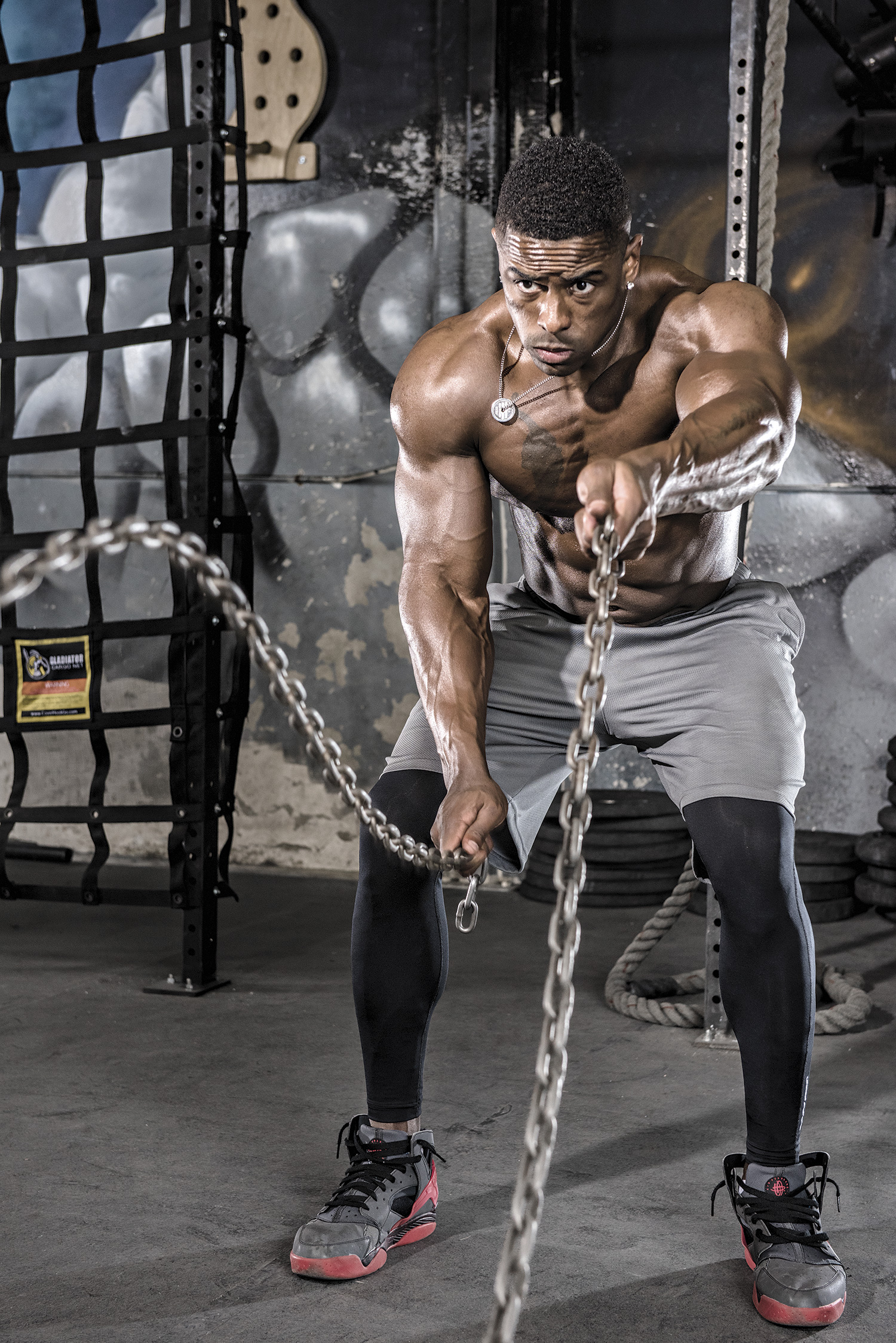
IM: Were there any parts of your football training that you’ve carried over into Physique?
JW: Absolutely. You might notice a lot of guys walking on the stair-stepper or the treadmill for their cardio. I do some of that, but I also implement all of my football conditioning work—stuff like ladder drills, box jumps, pushing the sled. Those explosive movements get me conditioned faster than going and walking on the stairs or riding the bike for 45 minutes.
IM: Physique competitors tend to go for a more athletic look than bodybuilders, so the football drills probably help you in that regard, right?
JW: Right. And also, a lot of people say Physique competitors aren’t really athletes because all they’re doing onstage is posing and doing quarter-turns. A lot of competitors get offended by that. But no one can really say that about me because I’m coming from being a pro in the NFL, and I was also a professional baseball player [drafted by the Florida Marlins in 1997 and playing three years in the minor leagues]. And now that I’m an IFBB pro, I’m the only three-sport pro out there.
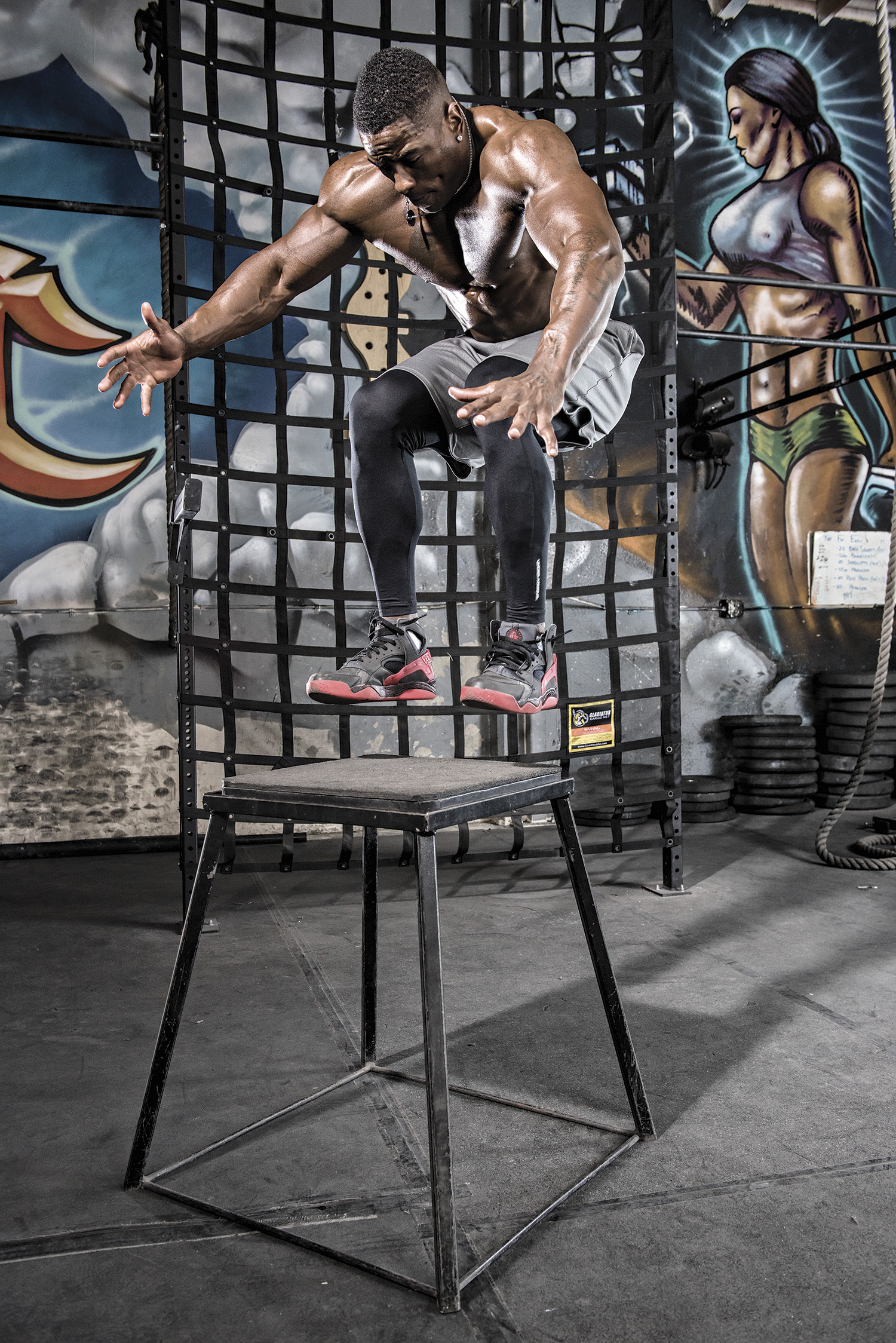
IM: You definitely know an athlete when you see one then, so would you say that Physique competitors are athletes?
JW: The people who say Physique competitors aren’t athletes are people who don’t really know much about the sport. But you can’t get in the weight room and do what we do for an hour and a half to two hours a day, every day, to get the body where it needs to be and not be an athlete. If you can do that, yes, you are an athlete.
IM: Are you bigger now than when you played in the NFL?
JW: Right now I’m probably about 10 pounds heavier than when I played football because I’m going into my off-season and I’m trying to gain weight. When I get shredded for a competition, people think I look bigger, but I’m actually lighter; it’s just an illusion because I’ve developed my muscles so much. The last time I stepped onstage about a month ago, I was actually lighter than when I played in the NFL. But onstage I had no body fat.
IM: Is getting shredded and dropping weight for a competition a new experience for you?
JW: Actually, not really. When I played in the NFL, I would go back and forth between 220 and 225 pounds. And the reason being was that every week I would fluctuate my weight based off the cornerback I was going up against. If I was going against a little bitty cornerback, somebody small but quick, I would go up to 225 so I could just make the game miserable for him by beating him up off the line. But if I was going against a bigger cornerback, like someone closer to my height, I would lose the five pounds so that now I could be quicker than him so he wouldn’t be able to move and swivel his hips fast enough to keep up with me.
IM: How much do you fluctuate in weight now as a Physique competitor between off-season and contest?
JW: Well, now that I’ve turned pro, I’ll have to kind of take to how these pros look. I’m tall and a lot of guys in this sport are short. They’re often like 5’9” or 5’11”, but they’re built upper body wise like a 6’3”, 230- or 240-pound guy. These guys have some big upper bodies. So I’m going to try and gain some size, maybe get up to 240 or 245, so that when I shed that weight I have size on me at 225 or 230.
IM: Do you know of any other former NFL players competing in Physique?
JW: I sure do. One of my former teammates Nick Barnett, who was a linebacker in the league, is in the transition of working out to get his body to be ready for stage. Do you remember the wide receiver Braylon Edwards? He’s in that transition to become a Physique athlete, too. And then, former running back for Tampa Bay and Arizona Michael Pittman just did his first NPC show recently. He was always built like a 202 bodybuilder, but he’s doing Physique. The more and more guys that I can inspire by showing them that their athletic careers don’t have to be over after the NFL, the better. More and more former NFL players are becoming aware of physique sports.
IM: What are your goals in Physique? Now that you have your pro card, do you intend to stay in this sport for a long time?
JW: Oh, yes, sir. A lot of people say, “You’ve got your pro card, now what are you going to do?” Well, now you try and be the best pro you can be. It’s like when a guy makes it to the NFL, that’s like him getting his pro card. Once you’re in the NFL, what do you want to do? When I made it to the NFL, my next step was trying to become one of the best wide receivers in the league and being recognized as a Pro Bowl wide receiver. And that’s what I did in my career. So now as a Physique pro, I’m going to try and be the best Physique pro that I can be. I want to be at the height of the sport, and that’s competing at the Mr. Olympia. And that’s my goal for 2016: To be able to say that I stepped on that Olympia stage, which in NFL terms would be like making the Pro Bowl. IM
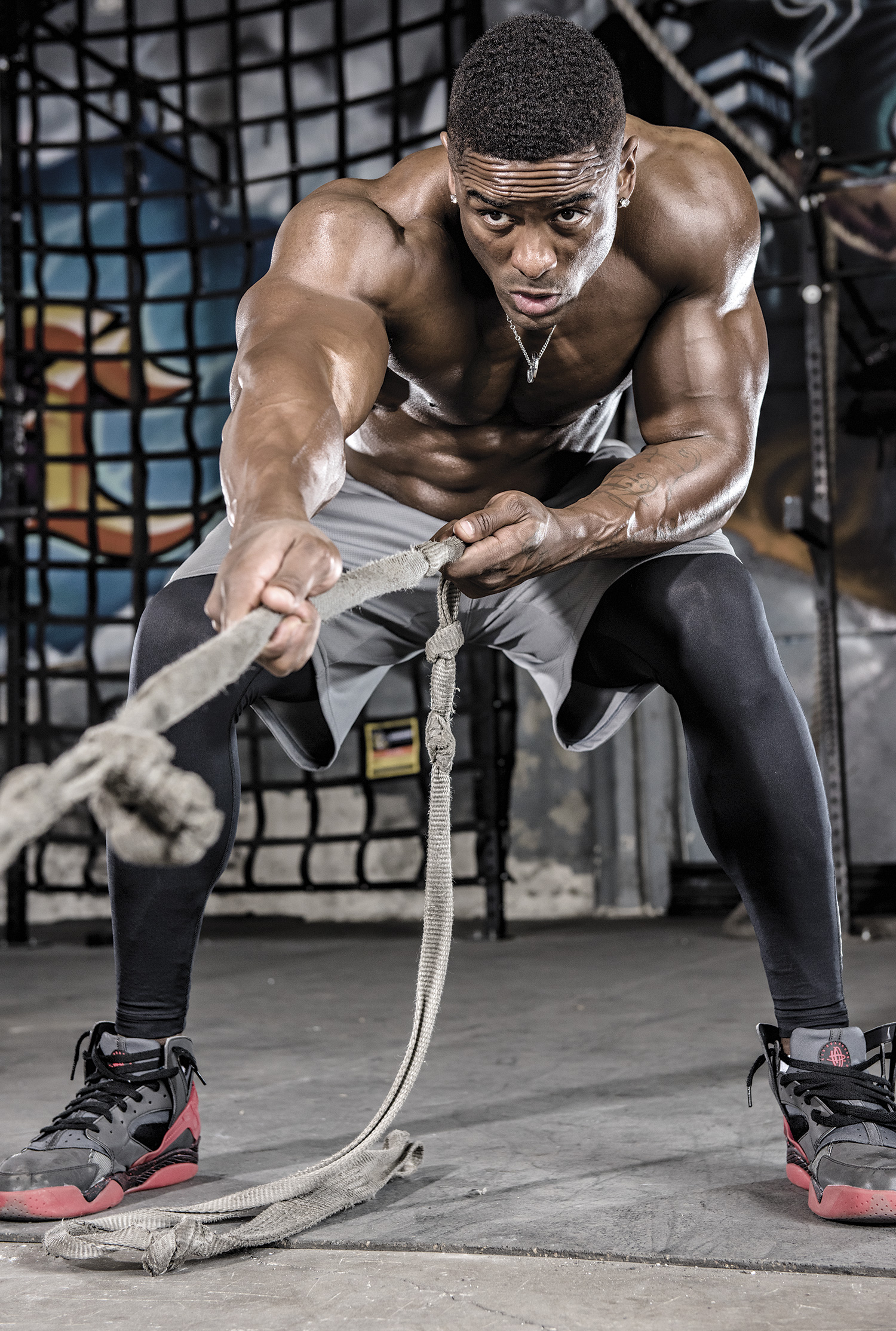
Javon’s Physique Game Plan
Former NFL wide receiver turned IFBB Physique pro Javon Walker schedules his week around adding size to his 6’,3” frame through lifting while maintaining an athletic look with a diverse cardio regimen. Here’s how it breaks down:
1. Focus On Body Parts
Weight Training Split
Day 1 – Chest, triceps, abs
Day 2 – Back, abs
Day 3 – Legs
Day 4 – Shoulders, biceps, abs
Cycle repeats
Walker trains six or seven days a week, depending on how his body feels. Sunday is a typical day off from lifting.
2. Train Instinctively
“I don’t go to the gym knowing exactly what exercises I’m going to do,” Walker says. “I train based on how I’m feeling and what exercises sound good to me in the moment. But I’ll tell you this much, it’s never been fewer than five exercises for large body parts.”
3. Go High On Reps
Walker’s exercise selection varies, but his sets and reps are fairly consistent. His go-to rep scheme for most exercises is this: six sets x 30, 25, 20, 15, 10, 10 reps. Every set he increases weight, topping out on his last two sets of 10 reps.
“I do a lot of high-rep sets,” Walker says. “This really gets the muscles to burn and increases blood flow to the area. I’m adding weight on each set, but I’m still concentrating on strict form and a full range of motion to develop the muscle. When I get down to 15 reps, I’m starting to stack on the weights to keep some strength work in there.”
4. Do High-Intensity Cardio After Lifting
During pre-contest prep, Walker performs football-style drills as high-intensity interval-training (HIIT) cardio following lifting workouts. A typical HIIT session looks like this:
Sled Push: Four to five sets, 50 yards, 30 to 45 seconds rest between sets
Box Jumps: Four to five sets, jumping over plyo boxes of varying heights and changing up the types of jumps, including two-leg jumps and single-leg jumps. Rest periods are 30 to 45 seconds.
Ladder Drill: Eight to 10 different footwork drills, staying in a low position throughout, which works the quads to a high degree.
5. Do Steady-State Cardio In The Morning
Leading up to a competition, Walker does cardio twice a day for 12 weeks: HIIT in the afternoon after lifting, and steady-state cardio in a fasted state first thing in the morning. His steady-state work typically involves 45 minutes on a stair-stepper machine, stationary bike, or walking on a treadmill.






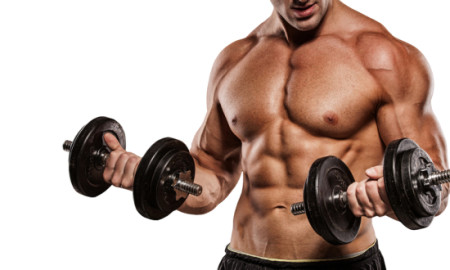






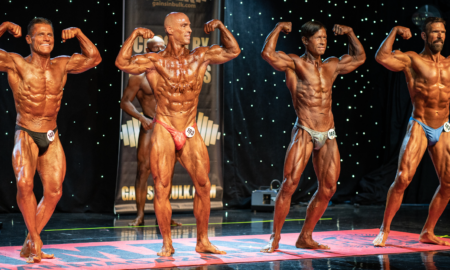
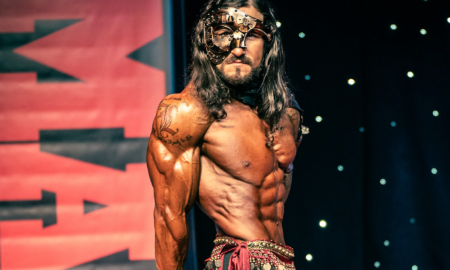
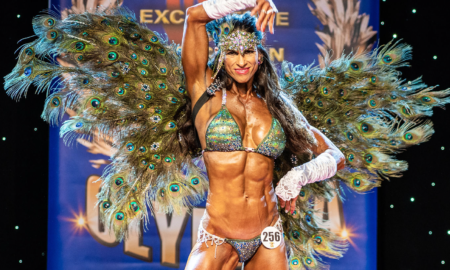
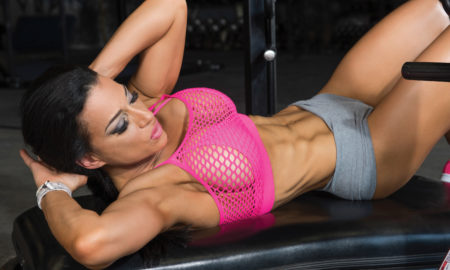
You must be logged in to post a comment Login